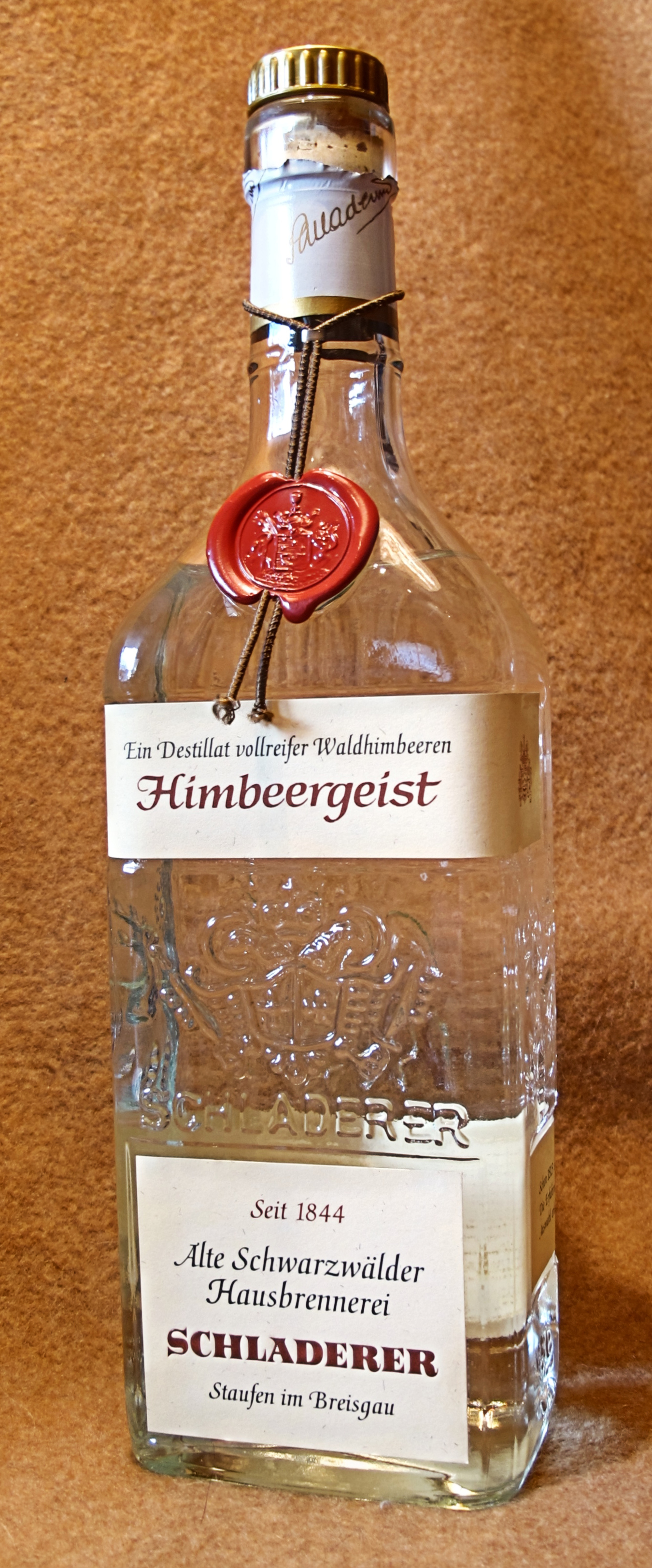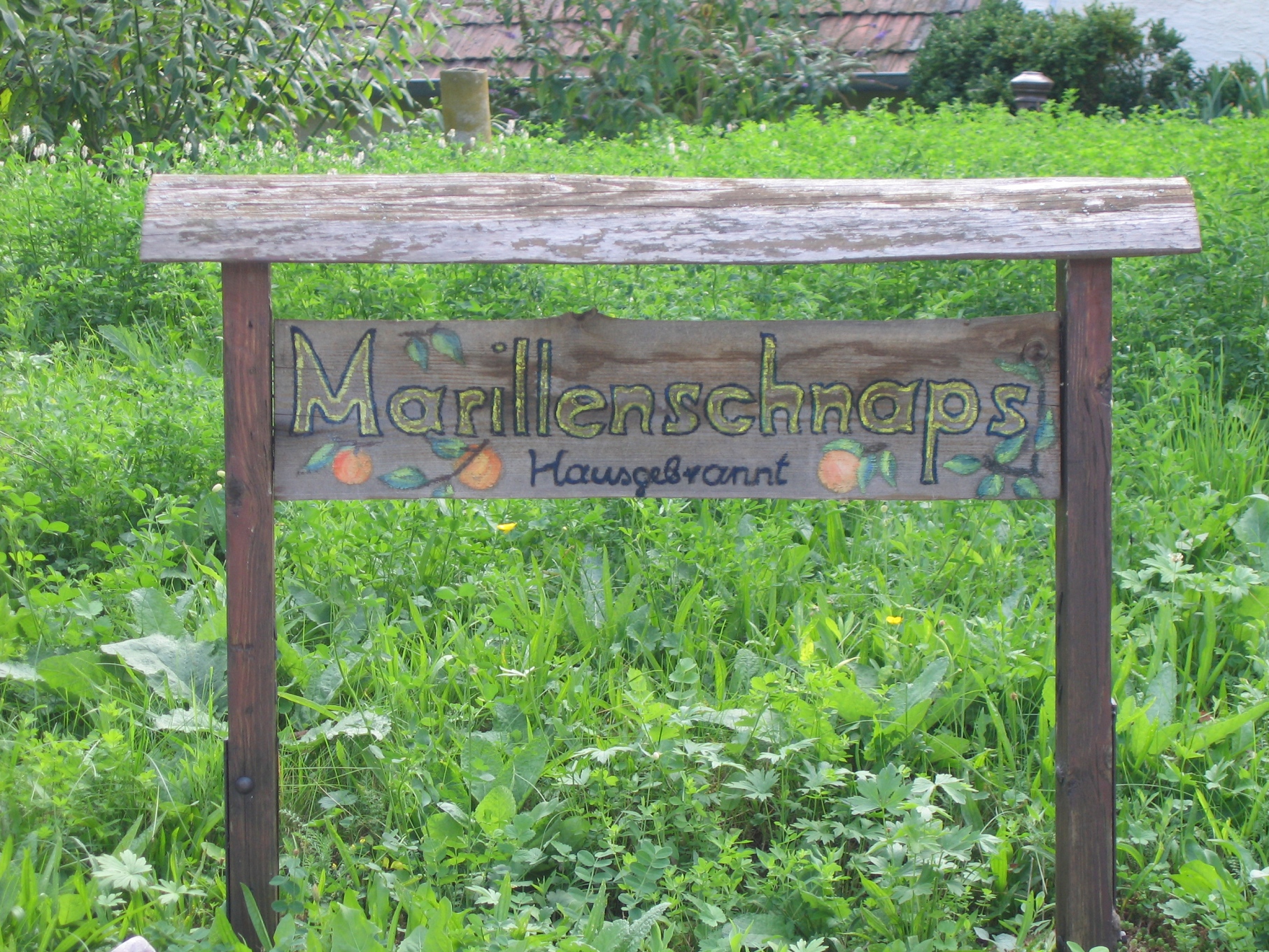|
Schnapps
Schnapps ( or ) or schnaps is a type of alcoholic beverage that may take several forms, including distilled fruit brandies, herbal liqueurs, infusions, and "flavored liqueurs" made by adding fruit syrups, spices, or artificial flavorings to neutral grain spirits. The English loanword "schnapps" is derived from the colloquial German word ''Schnaps'' (plural: ''Schnäpse''), which is used in reference to spirit drinks. The word ''Schnaps'' stems from Low German and is related to the German term "''schnappen''", meaning "snap", which refers to the spirit usually being consumed in a quick slug from a small glass (i.e., a shot glass). European The German term ''Schnaps'' refers to "any kind of strong, dry spirit", similar to how '' eau de vie'' (water of life) is used in French, '' aguardiente'' (burning water) in Spanish, or ''aguardente'' in Portuguese. ''Obstler'' An ''Obstler'', or ''Obstbrand'' (from the German ''Obst'', fruit and ''Brand'', brandy), is a traditional ... [...More Info...] [...Related Items...] OR: [Wikipedia] [Google] [Baidu] |
Liqueur
A liqueur ( , ; ) is an alcoholic drink composed of Liquor, spirits (often rectified spirit) and additional flavorings such as sugar, fruits, herbs, and spices. Often served with or after dessert, they are typically heavily sweetened and un-aged, beyond a resting period during production, when necessary, for their flavors to mingle. Liqueurs are historical descendants of herbal medicines. They were made in France as early as the 13th century, often prepared by monks (for example, Chartreuse (liqueur), Chartreuse). Today they are produced all over the world, commonly served neat, over ice, with coffee, in cocktails, and used in cooking. Etymology The French word ''liqueur'' is derived from the Latin ''liquifacere'', which means "to dissolve". In some parts of the United States and Canada, liqueurs may be referred to as cordials, or schnapps. This can cause confusion as in the United Kingdom a Squash (drink), cordial would refer to a non-alcoholic concentrated fruit syrup, typ ... [...More Info...] [...Related Items...] OR: [Wikipedia] [Google] [Baidu] |
Eau De Vie
An ''eau de vie'' ( French for spirit, §16, §17 ) is a clear, colourless fruit brandy that is produced by means of fermentation and double distillation. The fruit flavor is typically very light. In English-speaking countries, ''eau de vie'' refers to a distilled beverage made from fruit other than grapes. Similar terms may be local translations or may specify the fruit used to produce it. Although ''eau de vie'' is a French term, similar beverages are produced in other countries (e.g., German ''Schnaps'', Greek '' ούζο'', Turkish '' rakı'', Balkan ''rakia'', Romanian '' țuică'', Czech and Slovak ''pálenka'', Hungarian '' pálinka'', and Sri Lankan coconut ''arrack''). In French, however, ''eau de vie'' is a generic term for distilled spirits. The proper French term for fruit brandy is ''eau-de-vie de fruit'', while ''eau-de-vie de vin'' means wine spirit (brandy), and several further categories of spirits (distilled from grape pomace, lees of wine, beer, cereal ... [...More Info...] [...Related Items...] OR: [Wikipedia] [Google] [Baidu] |
Marillenschnaps
Marillenschnaps, also called Marillenbrand, is a fruit brandy made from apricots. It is mostly produced in the Wachau region of Austria, but similar apricot brandies are produced elsewhere. Many small orchards produce excellent home-made varieties of ''Marillenschnaps''. ''Marillen'' is an Austrian German and Bavarian term for apricots, which are known as ''Aprikosen'' in other German-speaking regions. Production ''Marillenschnaps'' should be clear with a strong apricot aroma. Its alcohol content should be close to 40% ABV. of ripe apricots will produce about of ''Marillenschnaps''. See also * Barack (brandy) *Schnapps Schnapps ( or ) or schnaps is a type of alcoholic beverage that may take several forms, including distilled fruit brandies, herbal liqueurs, infusions, and "flavored liqueurs" made by adding fruit syrups, spices, or artificial flavorings to ... References {{reflist Fruit brandies ... [...More Info...] [...Related Items...] OR: [Wikipedia] [Google] [Baidu] |
Kirsch
''Kirschwasser'' (, , ; German for 'cherry water'), or just ''Kirsch'' (; the term used in Switzerland and France, less so in Germany), is a clear, colourless brandy from Germany, Switzerland, and France, traditionally made from double distillation of morello cherries. It is now also made from other kinds of cherries. The cherries are fermented completely, including their stones.Lichine, Alexis. ''Alexis Lichine's New Encyclopedia of Wines & Spirits'' (New York: Alfred A. Knopf, 1987), p. 292. Unlike cherry liqueurs and cherry brandies, ''Kirschwasser'' is not sweet. It is sometimes distilled from fermented cherry juice. Serving ''Kirschwasser'' is usually drunk neat. It is traditionally served cold in a very small glass and is taken as an apéritif. It is an important ingredient in fondue. People in the German-speaking region where it originated usually serve it after dinner, as a digestif. ''Kirschwasser'' is used in some cocktails, such as the Ladyfinger, the Florid ... [...More Info...] [...Related Items...] OR: [Wikipedia] [Google] [Baidu] |
Alsace
Alsace (, ; ) is a cultural region and a territorial collectivity in the Grand Est administrative region of northeastern France, on the west bank of the upper Rhine, next to Germany and Switzerland. In January 2021, it had a population of 1,919,745. Alsatian culture is characterized by a blend of German and French influences. Until 1871, Alsace included the area now known as the Territoire de Belfort, which formed its southernmost part. From 1982 to 2016, Alsace was the smallest administrative in metropolitan France, consisting of the Bas-Rhin and Haut-Rhin Departments of France, departments. Territorial reform passed by the French Parliament in 2014 resulted in the merger of the Alsace administrative region with Champagne-Ardenne and Lorraine to form Grand Est. On 1 January 2021, the departments of Bas-Rhin and Haut-Rhin merged into the new European Collectivity of Alsace but remained part of the region Grand Est. Alsatian dialect, Alsatian is an Alemannic German, Alemannic ... [...More Info...] [...Related Items...] OR: [Wikipedia] [Google] [Baidu] |
Aguardiente
( Portuguese) or ( Spanish) (; ; ) is a type of distilled alcoholic spirit that contains between 29% and 60% alcohol by volume (ABV). It is a somewhat generic term that can refer to liquors made from various foods. It originates from and is typically consumed on the Iberian Peninsula (Portugal and Spain) and in Iberian America (Spanish- and Portuguese-speaking countries of the Americas). Etymology The word is a compound of the Iberian languages' words for "water" ( in Castilian; in Catalan; in Portuguese; in Galician) and "burning"/"fiery" ( in Castilian; in Catalan; in Portuguese and Galician). A comparable word in English is "firewater", though the English term is colloquial or humorous, whereas ''aguardiente'' is stylistically neutral in Spanish. Definition ''Aguardientes'' are strong alcoholic beverages obtained by fermentation then distillation of sugared or sweet musts, vegetable macerations, or mixtures of the two. This is the most generic level; by this defi ... [...More Info...] [...Related Items...] OR: [Wikipedia] [Google] [Baidu] |
Aguardente
(Portuguese language, Portuguese) or (Spanish language, Spanish) (; ; ) is a type of distilled alcoholic spirit that contains between 29% and 60% alcohol by volume (ABV). It is a somewhat generic term that can refer to liquors made from various foods. It originates from and is typically consumed on the Iberian Peninsula (Portugal and Spain) and in Iberian America (Spanish- and Portuguese-speaking countries of the Americas). Etymology The word is a compound (linguistics), compound of the Iberian Romance languages, Iberian languages' words for "water" ( in Castilian; in Catalan; in Portuguese; in Galician) and "burning"/"fiery" ( in Castilian; in Catalan; in Portuguese and Galician). A comparable word in English is "firewater", though the English term is colloquial or humorous, whereas ''aguardiente'' is stylistically neutral in Spanish. Definition ''Aguardientes'' are strong alcoholic beverages obtained by fermentation (food), fermentation then distillation of sugared o ... [...More Info...] [...Related Items...] OR: [Wikipedia] [Google] [Baidu] |
Liquor
Liquor ( , sometimes hard liquor), spirits, distilled spirits, or spiritous liquor are alcoholic drinks produced by the distillation of grains, fruits, vegetables, or sugar that have already gone through ethanol fermentation, alcoholic fermentation. While the word ''liquor'' ordinarily refers to distilled alcoholic spirits rather than drinks produced by fermentation alone, it can sometimes be used more broadly to refer to any alcoholic beverage (or even non-alcoholic ones produced by distillation or some other practices, such as the brewed liquor of a tea). The distillation process concentrates the alcohol, the resulting condensate has an increased alcohol by volume. As liquors contain significantly more alcohol (drug), alcohol (ethanol) than other alcoholic drinks, they are considered "harder". In North America, the term ''hard liquor'' is sometimes used to distinguish distilled alcoholic drinks from non-distilled ones, whereas the term ''spirits'' is more commonly used in ... [...More Info...] [...Related Items...] OR: [Wikipedia] [Google] [Baidu] |
Fruit Brandies
Fruit brandy (or fruit spirit) is a distilled beverage produced from mash, juice, wine or residues of edible fruits. The term covers a broad class of spirits produced across the world, and typically excludes beverages made from grapes, which are referred to as plain brandy (when made from distillation from wine) or pomace brandy (when made directly from grape pomace). Apples, pears, apricots, plums and cherries are the most commonly used fruits. Definition According to a legal definition in the United States, a "fruit brandy" is distilled "solely from the fermented juice or mash of whole, sound, ripe fruit, or from standard grape, citrus, or other fruit wine, with or without the addition of not more than 20 percent by weight of the pomace of such juice or wine, or 30 percent by volume of the lees of such wine, or both." In the European Union, fruit spirits may not be labeled as "fruit brandy"; instead, the legal English denomination is fruit spirit, which is "produced exclusiv ... [...More Info...] [...Related Items...] OR: [Wikipedia] [Google] [Baidu] |
Cherry
A cherry is the fruit of many plants of the genus ''Prunus'', and is a fleshy drupe (stone fruit). Commercial cherries are obtained from cultivars of several species, such as the sweet '' Prunus avium'' and the sour '' Prunus cerasus''. The name 'cherry' also refers to the cherry tree and its wood, and is sometimes applied to almonds and visually similar flowering trees in the genus ''Prunus'', as in " ornamental cherry" or " cherry blossom". Wild cherry may refer to any of the cherry species growing outside cultivation, although ''Prunus avium'' is often referred to specifically by the name "wild cherry" in the British Isles. Botany True cherries ''Prunus'' subg. ''Cerasus'' contains species that are typically called cherries. They are known as true cherries and distinguished by having a single winter bud per axil, by having the flowers in small corymbs or umbels of several together (occasionally solitary, e.g. ''P. serrula''; some species with short racemes, ... [...More Info...] [...Related Items...] OR: [Wikipedia] [Google] [Baidu] |
Rakija
Rakia, rakija, rakiya, rachiu or rakı (), is the collective term for fruit spirits (or fruit brandy) popular in the Balkans. The alcohol content of rakia is normally 40% ABV, but home-produced rakia can be stronger (typically 50–80%). Overview Rakia is produced from fermented and distilled fruits, typically plums and grapes, but also apricots, pears, cherries or raspberries. Other fruits less commonly used are peaches, apples, figs, blackberries, and quince. Common flavours are '' šljivovica'' and '' țuică'', produced from plums, ''kaysieva''/''kajsija'', produced from apricots, or ''grozdova''/''lozova'' in Bulgaria, ''raki rrushi'' in Albania, ''lozovača''/''komovica'' in Croatia, North Macedonia, Montenegro, Serbia, Bosnia and Herzegovina all produced from grapes. Plum and grape rakia are sometimes mixed with other ingredients, such as herbs, honey, sour cherries and walnuts, after distillation. By country Albania Raki ( sq-definite, rakia) (a type of rak ... [...More Info...] [...Related Items...] OR: [Wikipedia] [Google] [Baidu] |







